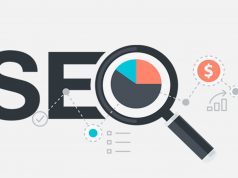The workflow of the modern workplace has evolved considerably due to the widescale adoption of devices. Smartphones, tablets, rugged devices, and even kiosks and point of sale (POS) systems have enhanced productivity, connectivity, and convenience at modern businesses.
However, as the number of devices in the workplace increases, businesses face several challenges in managing and securing these devices.
Here is where Mobile Device Management (MDM) comes into play.
So, what is MDM? Let’s find out.
What is Mobile Device Management?
According to this article about mobile device management tools, mobile device management is the process of managing and securing mobile devices used within an organization. MDM software allows businesses to control and monitor their devices remotely, ensuring compliance with company policies, securing sensitive data, and optimizing device performance.
MDM solutions provide a centralized platform that enables IT administrators to manage device settings, applications, and data across multiple devices and operating systems.
Essential Components of MDM Tools
Good mobile device management software uses security policies to protect important data. It also shields devices from attacks like ransomware or man-in-the-middle hacks. Modern MDM software can carry some of the following components:
- Remote Access: Most MDM tools allow you to remotely control and configure devices to some degree.
- Tracking: Almost every modern digital device carries location-based features nowadays. MDM software can leverage this technology to track devices in your fleet.
- App Management: Preventing unauthorized installations on your devices is critical to your business’s security. A good MDM allows you to manage device content to stop unauthorized downloads.
- Monitoring: Top MDM software allows companies to check the health of devices. From battery health to cybersecurity threats, device monitoring helps optimize performance.
- Updates: System updates and security patches are critical tools that help maintain device health. Not only do MDM tools allow you to roll out updates, but they also help you schedule updates at off-peak hours to minimize disruptions to workflow.
What Type of Organization Can Use MDM Software?
Organizations of all sizes can use MDM tools to monitor and shield their devices, from employee devices on a company network to business-critical devices like kiosks or POS.
Industries that can benefit from MDM solutions include:
- Retail
- Logistics & transportation
- Restaurant
- Hospitality
- Connected fitness
- Healthcare
Common Benefits of Implementing Mobile Device Management
There are many benefits to rolling out a robust MDM solution for your business. Here are five of the most common advantages:
- Enhanced Security: MDM solutions help businesses enforce security policies, such as passcode requirements, encryption, and remote data wipe, to protect sensitive information from unauthorized access or loss.
- Increased Productivity: With MDM, employees can securely access corporate resources and applications on their mobile devices, enabling them to work from anywhere, anytime, leading to improved productivity and flexibility.
- Cost Savings: MDM can help businesses optimize device usage and reduce support costs by remotely managing devices, troubleshooting issues, and automating routine tasks.
- Streamlined Device Management: MDM can offer a centralized platform for managing devices, applications, and data, simplifying the administration process and reducing IT workload.
- Compliance and Policy Enforcement: MDM solutions can help businesses enforce compliance with industry regulations and company policies, ensuring data protection and adherence to security standards.
Selecting the Right Mobile Device Management Solution
Picking the right MDM software is essential. Here are some features for you to consider when picking MDM tools for your business.
1. Compatibility
Many companies require MDM software for more than iOS and Android systems. Check that your MDM platform is compatible with the company equipment you use to run your business, including tablets and POS devices.
2. Device Enrollment and Provisioning
An MDM solution should offer seamless device enrollment and provisioning options, allowing IT administrators to set up and configure devices for employees quickly.
3. Application Management
The ability to manage applications on mobile devices is crucial for businesses. Look for an MDM solution that allows for centralized application distribution, updates, and policy enforcement.
4. Security and Compliance
Robust security features are essential in an MDM solution. Look for features like passcode enforcement, encryption, remote data wipe, and compliance monitoring to ensure data protection and adherence to security standards.
5. Remote Device Management
Remote management capabilities enable IT administrators to troubleshoot device issues, update configurations, and perform routine maintenance tasks without physical access to the devices.
6. Reporting and Analytics
An MDM solution should provide:
Detailed reporting and analytics capabilities.
Allowing businesses to gain insights into device usage.
Performance.
Compliance metrics.
7. Integration with Existing Systems
Consider an MDM solution that integrates seamlessly with your organization’s existing IT infrastructure, including directory services, email systems, and other management tools.
A Full-Stack Device Management Solution
If you’re looking for MDM software, consider going beyond conventional MDM tools by picking a full-stack solution. In a nutshell, a full-stack device management solution is end-to-end, covering everything from the hardware at the edge to the console on the other side. Such a solution ensures that your hardware, software, and device management work together in unison.
Editorial Staff of the TechnoRoll, are a bunch of Tech Writers, who are writing on the trending topics related to technology news and gadgets reviews.



